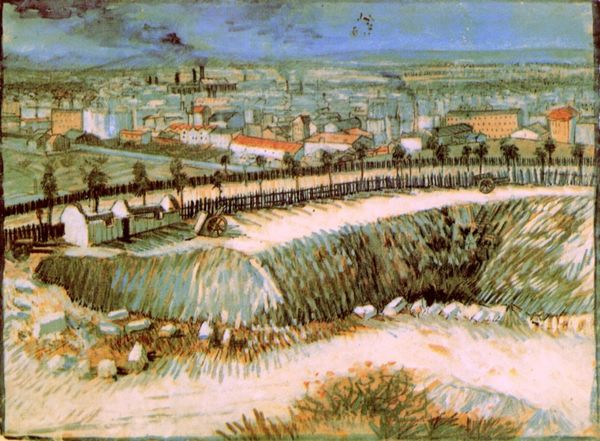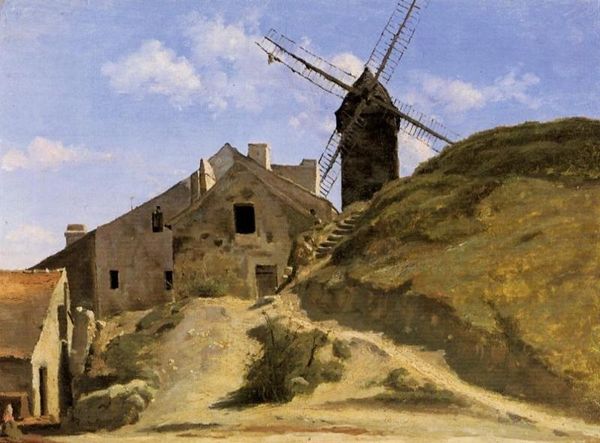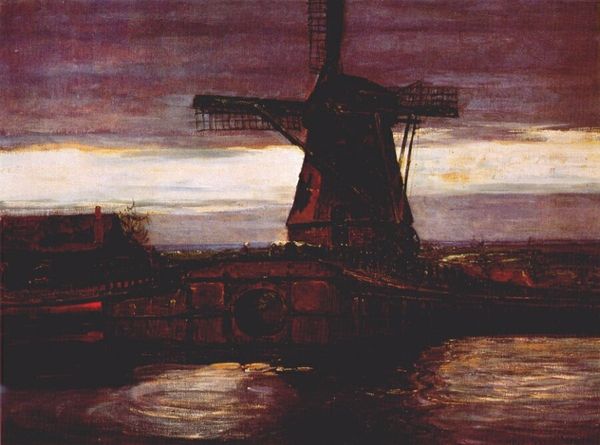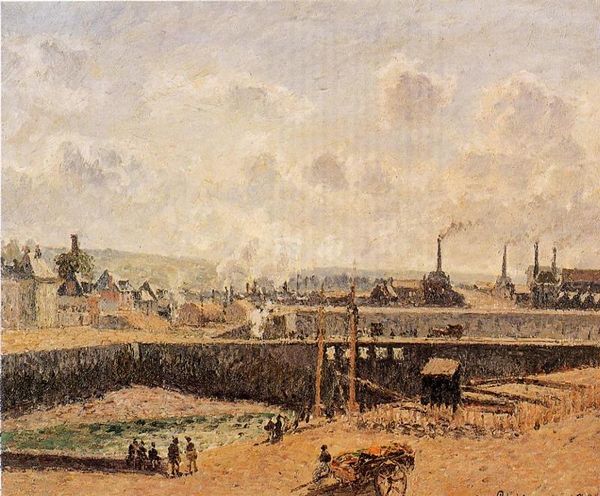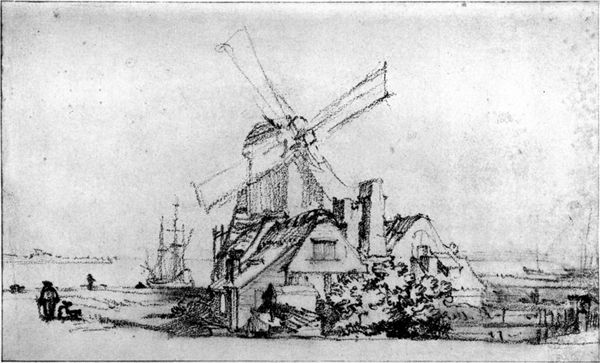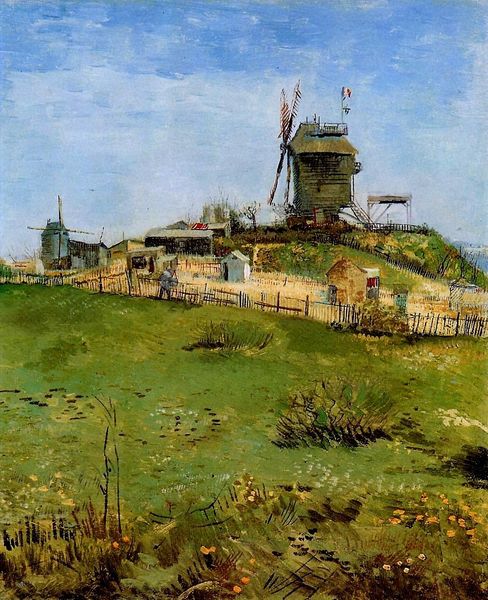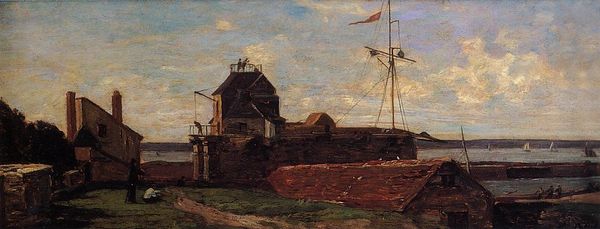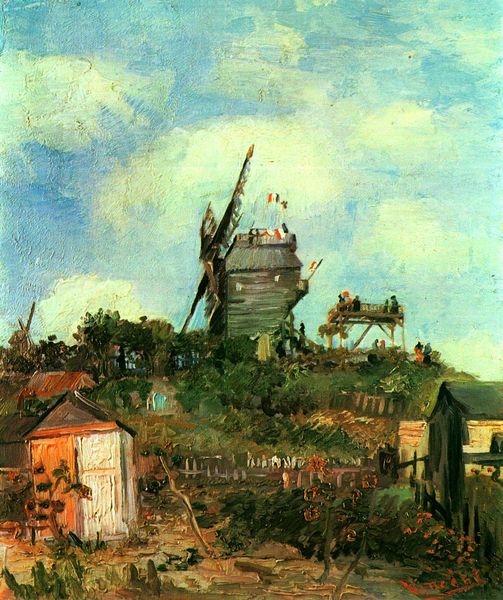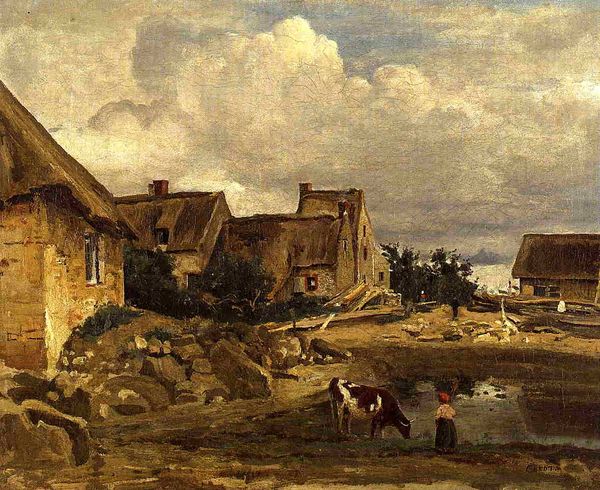
painting, plein-air, oil-paint
#
painting
#
impressionism
#
impressionist painting style
#
plein-air
#
oil-paint
#
landscape
#
impressionist landscape
#
oil painting
#
cityscape
#
post-impressionism
#
modernism
Copyright: Public domain
Curator: Immediately, I'm drawn to the earthy tones. It feels like the memory of a place, slightly dreamlike. A quaint village seen through gauze. Editor: Well said. This is Van Gogh’s "Montmartre the Quarry and Windmills", painted in 1886. It currently resides at the Kröller-Müller Museum in the Netherlands. And those colors... quite different from what we often associate with Van Gogh, wouldn't you say? Curator: Absolutely. Gone is that fiery sun and intense blues. Here, there's a subdued quality, a harmony built of ochres, browns and faded greens. The windmills almost appear to be sighing. Is it sadness, or maybe quiet contemplation? Editor: It is a really fascinating example from his Paris period. Montmartre, at that time, was rapidly transforming due to urban expansion, becoming almost a site of conflict between old rural ways and the pressures of modern urbanization. We might consider how this changing landscape informs the work. Curator: You can feel that tension, can’t you? Those little houses huddled together almost look as if they're bracing themselves. Van Gogh beautifully captures the moment when the countryside is becoming a suburb, holding onto a certain quiet and stillness despite the surrounding chaos. The fence snakes through the composition, a lovely little barrier between eras. Editor: Right. And Van Gogh was not just an observer; he was very much involved in these societal shifts, and we can consider the role that art production itself had on these evolving modern environments, how artists created both value and appeal. Curator: He paints with such tenderness for these overlooked spaces, elevating the mundane with that touch of dreaminess, which might remind me of a childhood memory fading around the edges. Editor: Absolutely. I think Van Gogh uses these liminal spaces in Montmartre, both formally and symbolically, to consider not just how Parisian society changed, but also how modern art practices contributed to those changes. The painting doesn't just represent history; it becomes a historical actor. Curator: It reminds me that everything changes. To see it is to capture what's been and what's becoming in the same gaze. And a rather moving capture at that! Editor: Precisely! We come away with a nuanced view, indeed, not just of a place and moment in time, but of the ever-changing role of art within societal transitions.
Comments
No comments
Be the first to comment and join the conversation on the ultimate creative platform.

